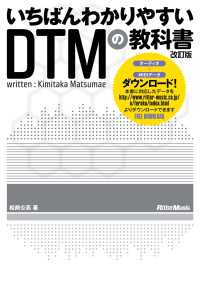- ホーム
- > 洋書
- > ドイツ書
- > School & Learning
- > school books
Full Description
The ability to translate texts is the stated goal of Latin classes. However, the question of how to not only translate texts verbatim, but also to grasp and understand them in their entirety, is increasingly coming into focus. This book offers practical suggestions with task formats that take up findings on text comprehension and reading research as well as current trends in language didactics and educational research: - task formats for students of all ability levels - "scaffolding", ie suggestions for a "structure" with graded aids , which specifically supports learners in understanding (and translating) a text - "Language-sensitive teaching": task formats for language formation, language awareness and language promotion. Depending on the teaching context and learning situation, the tasks presented here can be used as (relieving) preparation for a translation, as a substitute for a translation (e.g. for cursory reading) or after a translation to deepen the understanding of the content of the text.
-

- 電子書籍
- 異世界帰りの勇者は、ダンジョンが出現し…
-

- 電子書籍
- 【試し読み増量版】なやまんせ SMAR…
-

- 電子書籍
- 宝島 偕成社文庫
-

- 電子書籍
- いちばんわかりやすいDTMの教科書 改…
-

- 電子書籍
- ワシズ―閻魔の闘牌―4



